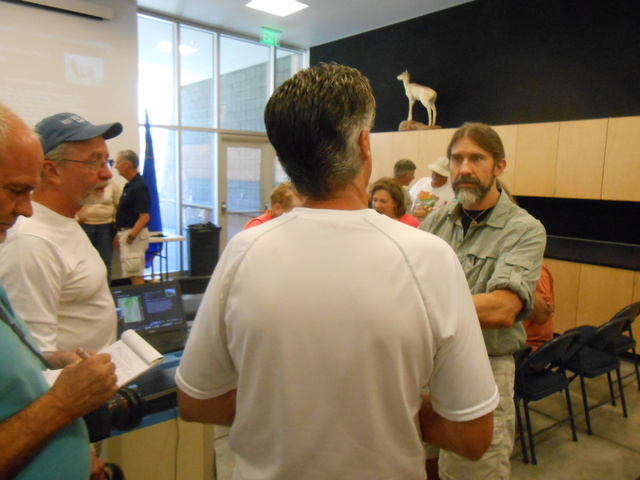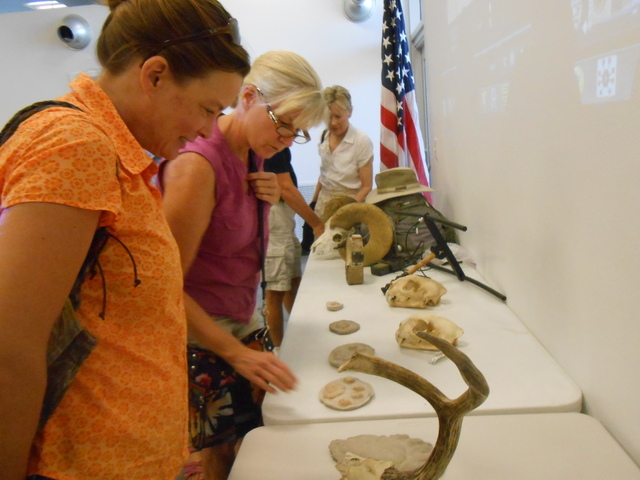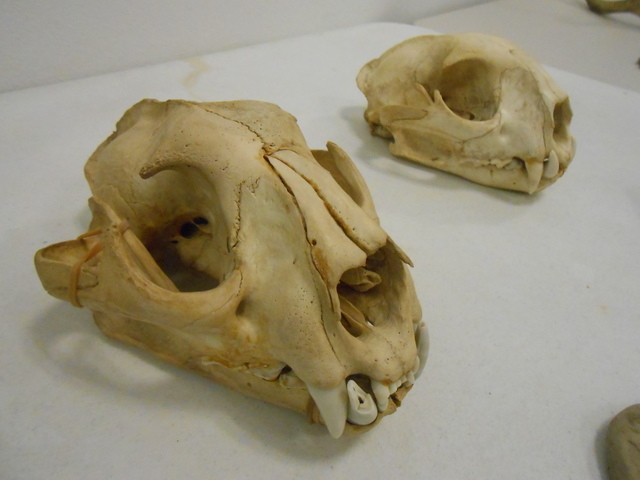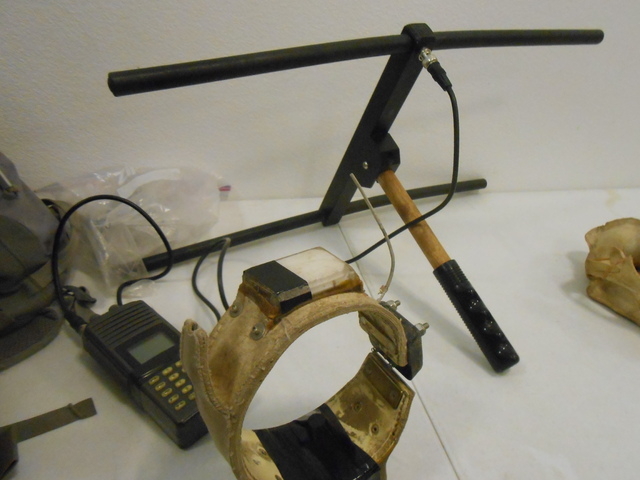Doctoral researcher visits Red Rock Canyon to present mountain lion findings
Many Las Vegas residents probably go their whole lives without a mountain lion sighting, but UNLV doctoral researcher David Choate seeks out the big cats on purpose.
On June 27, Choate visited the Red Rock Canyon National Conservation Area Visitor Center to speak about research he is doing on mountain lions. He also presented preliminary data from a cooperative study, titled “Survival and Habitat Requirements of Desert Bighorn Sheep on the Desert National Wildlife Refuge,” to about 50 Red Rock Canyon staff members and area residents.
The 2010 study looks at the survival and habitat requirements of desert bighorn sheep on the Desert National Wildlife Refuge, north of Las Vegas. Choate was tasked with determining the number of mountain lions in the Sheep Mountain area and their predatory impact on the sheep. To do that, he captured the animals, collared them with GPS units and tracked their movements. Collaring the animals was easier said than done, as mountain lions are generally nocturnal and notoriously cautious. Trying to trap animals could mean weeks at a campsite with no results.
“The longer you’ve been there, the more you want to stay,” he told attendees, “because you’ve invested so much of your time in it already. You know that as soon as you leave, (a mountain lion) will show up.”
Some cats proved intelligent. Video camera trail footage showed a cougar hesitating and then evading a trap. Another mountain lion in another area also displayed a wariness of the trap and stayed clear of it. Another time, a fox dug up the ground where a trap had been set, alerting the mountain lion to it.
Eventually, five cats were captured in the study area. Once the collars were on, blood samples were drawn and measurements were taken, the cats were released. Partial data began beaming up to satellites daily. The data boxes on the collars were set to release about 1½ years after being attached. The boxes could then be retrieved and the full data downloaded.
Choate pulled up a map on his projection screen, and the audience watched as bright icons moved up and down mountain ridges in the Sheep Range north of town, showing the day-by-day extent of the cats’ movements. In some cases, the icon barely moved, indicating, Choate said, that the lion had made a big kill and was eating off it for a couple of days.
During the study, one young male mountain lion ventured out of the area. From March 2011 to June 2011, data showed that he crossed Interstate 15, skirted Lake Mead, traveled to the Grand Canyon, turned back and spent some time southeast of Las Vegas, thenwas making his way to the Sheep Mountains, a round trip of roughly 310 miles.
That cat died of starvation. With the GPS coordinates in hand, Choate located the body, retrieved it and autopsied it. He determined that the lion had suffered two broken ribs and a number of lacerations, as though he’d been in a fight, perhaps with a bighorn sheep, perhaps encountering another male mountain lion.
“It demonstrates how these animals live on the edge,” Choate said.
From the collar data and studying more than 100 kill sites, preliminary data revealed various facts about the elusive predators: Their diet consists mostly of mule deer (60.5 percent), with 29.5 percent being bighorn sheep; small carnivores such as bobcats, badgers, gray foxes and coyotes make up 5 percent of their diet, with scavenging providing the rest; female mountain lions in the study weighed about 70 to 80 pounds, and a young male was 90 to 95 pounds (a big tomcat in Montana might weight 170); 84 percent of kills in the study took place farther than 1 kilometer of a water source; mountain lions have a gestation period of 90 days; and nursing litters average three kittens, although four have been known to occur.
Attendees asked how last year’s Carpenter 1 Fire, which burned 28,000 acres, affected the cats. Answer: It’s unknown. Where was the best place to spot the animal? In summer, Choate said to look to shaded areas or higher elevations. How likely is one to be attacked? Choate cited information collected by several groups covering 1991-2010, with 11 reported deaths, or about .55 cougar-caused fatalities per year.
“So, half a person is killed in North America each year,” he said in a joking manner. “In comparison, 460,000 will die from cigarettes and 220,000 from obesity. Now, if a person smokes and is obese …”
Roger Hembree, who volunteers at Red Rock Canyon, was there with his wife, Jodie.
“I thought he was very informative,” he said of Choate. “I get a lot of questions about the mountain lions, so this is going to help me.”
Tom Lisby, a hike assistant for the Red Rock Canyon Interpretive Association, said he was hiking near Oliver Ranch this spring and saw tracks he thought were from a mountain lion “and just today, I saw more at Rocky Gap Road.”
Why does he think they’re so elusive?
“I think they don’t want to see us,” he said.
Contact Summerlin Area View reporter Jan Hogan at jhogan@viewnews.com or 702-387-2949.

















